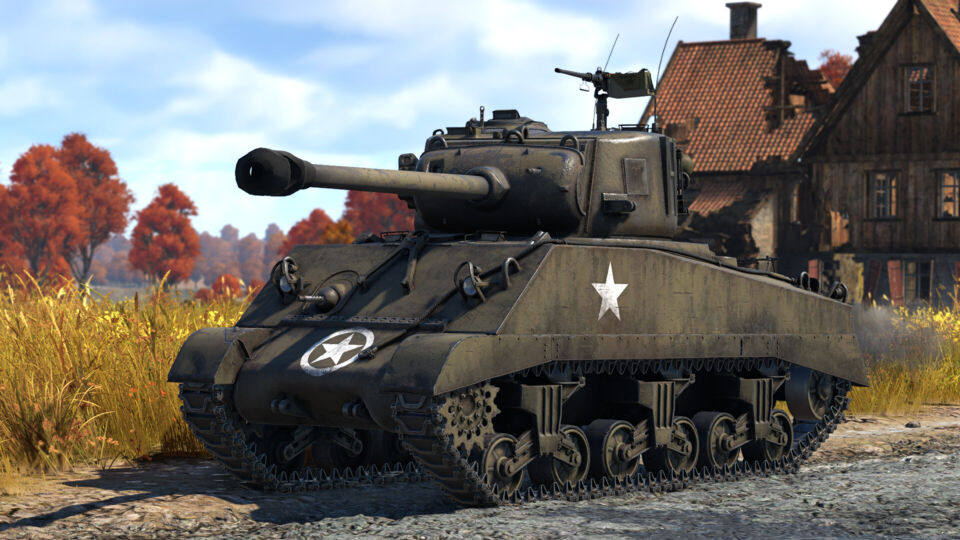During the late WW2 period, the U.S. Army realized that the newer German tanks (Panthers and Tigers) were not only getting more challenging and deadlier but were becoming more numerous on the battlefield. Hence, the U.S. looked for ways to increase the firepower; one method was to implement the M26 Pershing turret (T26 at the time) onto the Sherman hull, and while the single prototype test in 1944 proved it could be done, the U.S. canceled the project, knowing the conversion would be a waste of time over introducing the M26 Pershing immediately during the war.
The AH-60 Battlehawk is an Israeli development of the famed Sikorsky UH-60 Black Hawk utility helicopter, adapted for combat operations. With an exceptional air-to-ground armament in the form of 16 fire-and-forget SPIKE-ER missiles, the Battlehawk excels in ground engagements where it can devastate targets and overwhelm SPAAs with its SPIKEs while having the ability to dip behind cover to avoid any return fire.
The T26E1-1 “Super Pershing” is a famous up-gunned variant of the more ubiquitous M26 Pershing medium tank used by the United States Army during World War II. Deployed in the final months of the war, the Super Pershing was equipped with the powerful T15E1 cannon to rival the infamous German 8.8cm KwK 43 tank gun used by the Tiger II. In addition to its deadly main gun, the single Super Pershing sent to Europe received a unique appliqué armor package by soldiers of the 3rd Armored Division.
The Ferdinand was the one of the first heavy tank destroyers produced by the Germans in any significant quantity, formed from Ferdinand Porsches overconfidence in the Tiger P. After the loss of the Tiger I contract, Ferdinand Porsche was left with 100 unusable chassis. In an effort to create a use for said chassis, the Ferdinand was born. With a heavily armoured superstructure and the formidable German 8,8 cm Pak 43/2 L/71, the Ferdinand was a fearsome opponent for any hostile tank that came across it. It utilised a generator to turn the engine’s power to electricity to power motors to turn the drive sprockets, making it a very early hybrid vehicle. This enabled it to reverse at the same speed as it could go foward.
In the 1930s, as the political tension in the world was going up, France made the decision to modernize its aircraft fleet. The Republic owned vast territories abroad, including numerous islands, and required capable seaplanes. Meanwhile, its aircraft fleet at the time consisted of outdated models that couldn’t meet modern requirements. In 1934, the Latécoère company used its previous experience to create a new torpedo bomber, and in only two years, the first prototype Laté 298 performed its maiden flight.
Emerging from the T‑72/T‑90 lineage, the T‑90M “Proryv” blends proven Soviet design with targeted modernizations. Relikt ERA and composite modules reinforce its low‑profile turret and sloped glacis, reducing incoming damage. At its heart sits the 125 mm 2A46M‑5 cannon with an autoloader, capable of launching APFSDS, HEATFS, HE, or tandem‑warhead ATGMs offering adaptable firepower at all ranges. Though its –6° gun depression and 4 km/h reverse speed limit certain hull‑down and withdrawal maneuvers, the T‑90M excels when used to dictate engagements from hull‑down positions, supporting advances and punishing overextended foes.
The 120S is a modern upgrade built on a M60 hull with a M1A1 turret, marrying legacy design with contemporary firepower. With a powerful 120 mm M256 cannon and enhanced optics, it offers fresh tactical opportunities while retaining the familiar playstyle of its predecessor. Although the hull’s protection and mobility have limitations compared to fully modern designs, the 120S opens up new strategic possibilities on the battlefield.











